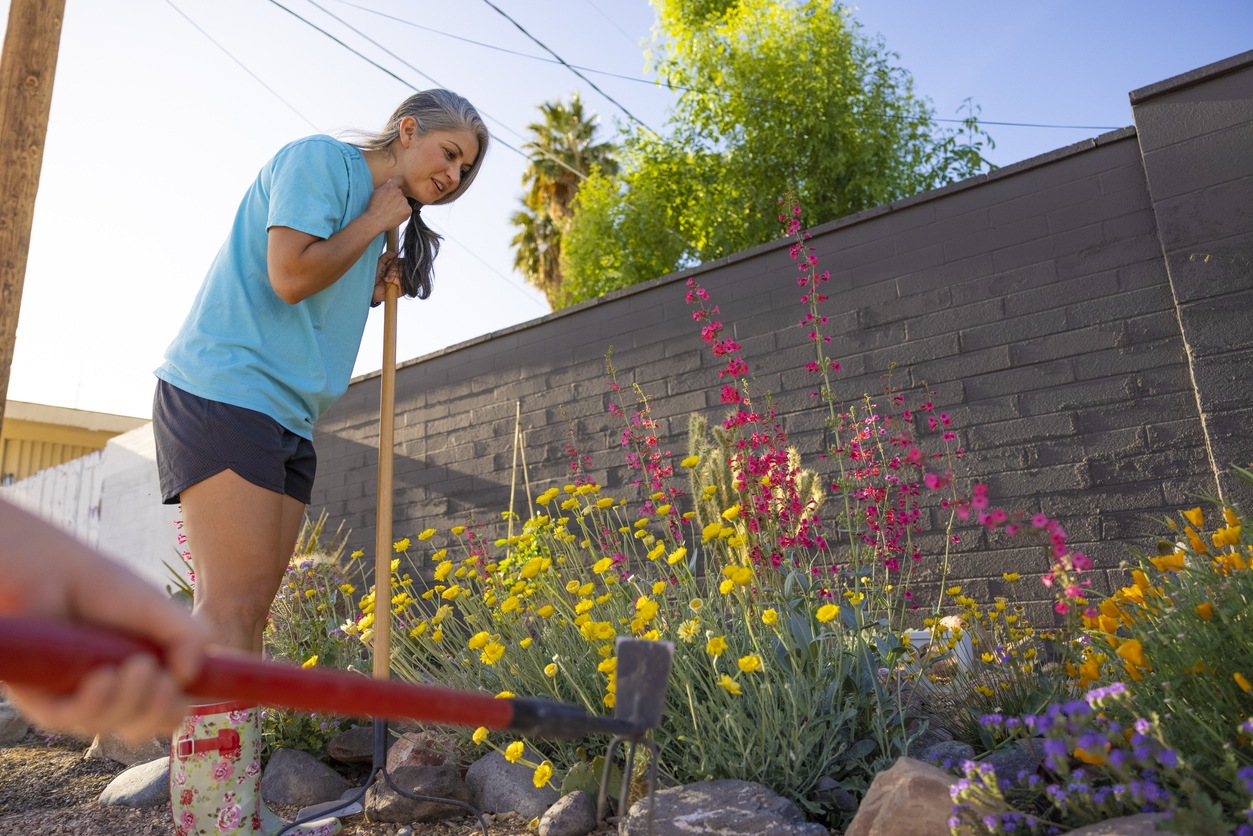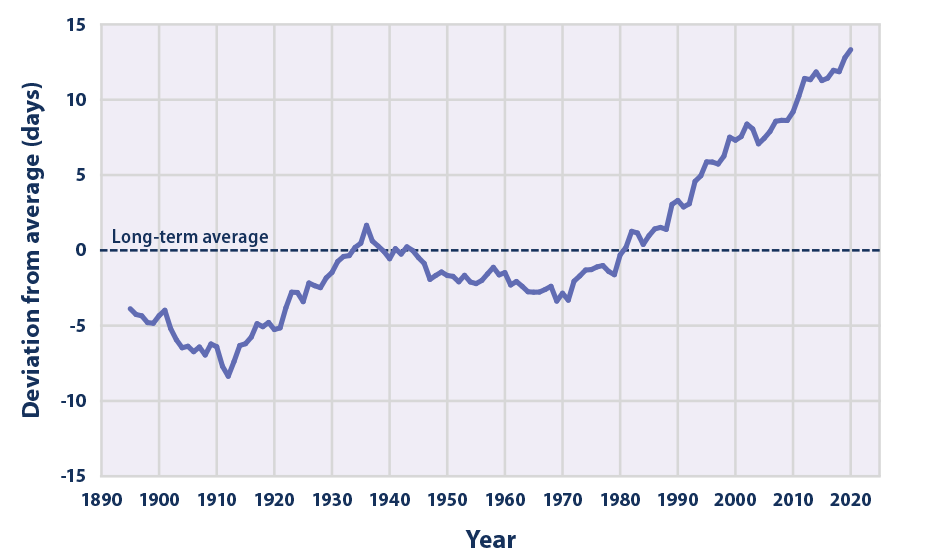We may earn revenue from the products available on this page and participate in affiliate programs. Learn More ›
The changes are subtle, but there’s no doubt that growing seasons are getting longer in most parts of the world. According to the Environmental Protection Agency (EPA), “the average length of the growing season in the contiguous 48 states has increased by more than two weeks since the beginning of the 20th century.”
While this is a welcome change in some areas, it’s having negative impacts on backyard habitats in other places. Longer growing seasons are affecting the gardening experience across the country, but there are actions that you can take to help your landscape transition smoothly.
RELATED: 10 Ways Your Backyard Garden Can Combat Climate Change
What Created the Longer Growing Seasons?
A growing season is a length of time during which rainfall and temperature are optimal to allow plants to grow. Most people measure that time frame from first to last frost dates. Growing seasons are also influenced by air temperatures, frost days, rainfall, and daylight hours.
The cause of longer growing seasons is climate change. “The average surface temperature of the world has increased about two degrees Fahrenheit or 1.1 degrees Celsius since the beginning of the 20th century,” explains Dr. Daniel A. Herms, Vice President of Research and Development at Davey Trees. The increased global temperatures also created a shift in precipitation patterns, causing plants to bloom earlier and first fall frosts to arrive later. According to the EPA, the growing season has lengthened in almost every state, but is increasing faster in Western states.
Pros and Cons of Longer Growing Seasons

Based on the data, a longer growing season would suggest you could enjoy blooms earlier and garden longer. However, not all areas will benefit from a lengthier growing season. “There are winners, and there are losers,” says Herms, “In northern climates, agriculture will benefit as long as there’s favorable precipitation.”
Pros
- Your area may now be a suitable habitat for plants that normally live in more southern regions. “We can now grow southern magnolias in Ohio” says Herms, “So that might be considered a good thing, but it’s a sign that things are changing.”
- Southern gardeners have long enjoyed the ability to garden year-round. As the growing season increases, northern gardeners are experiencing the joy of getting multiple harvests from their gardens and enjoying spring blooms earlier in the season.
Cons
- Insect pests are emerging earlier. “It’s (longer growing seasons) changing their life cycles or we are seeing more generations per year for certain insect pests than in the past, and populations are growing faster,” explains Herms.
- Invasive plants that normally thrive in warmer climates are shifting north. Problematic species such as kudzu and garlic mustard are moving into new areas that have previously not been warm enough for them to thrive.
- There is phenological asynchrony (affecting the interactions of species, availability of resources, and shifting of ranges). Because the warmer climate causes insects to emerge and flowers to bloom earlier, pollinators and birds may arrive too late to feed. Bird and pollinator migrations are primarily based on day length. “Dartmouth College professors did a long term study of the Warblers and other migratory birds in the Hubbard Brook forest,” explains Herms, “ They found that their reproductive success has declined.” This decline is the result of less availability of caterpillars when they’re returning from their overwintering grounds.
- Increased heat waves and unpredictable droughts are more prevalent. Plants and insects experience heat stress just like people.
- Climate shifts are leading to loss of habitat. Native plants may no longer be able to survive in portions of their historic range.
RELATED: 10 Ways to Make Your Garden More Bee-Friendly
What You Can Do
The cons outweigh the pros for a longer growing season, but there are some things you can do to help mitigate the effects of warmer climates.
Study the Phenology of Your Yard

Phenology is the study of cyclic and seasonal climate and how it affects plant and animal life patterns. Many scientists and historians have used the natural study to record environmental changes for thousands of years. One of the most famous American phenologists was Henry David Thoreau. He made detailed records of phenological events at Walden Pond. “In recent years, researchers went back and revisited Walden Pond and found that everything is blooming earlier,” explains Herms.
Observe your local area and take notes on when early spring bloomers break dormancy. Take note of when garden pests arrive. This process takes a few seasons’ worths of observations to see a pattern.
Adapt and Diversify
Nature has an amazing ability to adapt, and it may take several seasons for your landscape to adapt to its new environment. You can also choose plants that will thrive better in warmer climates and are more drought tolerant. “Choose the right plant for the site,” says Herms, “Understanding the physiological requirements and tolerances of those plants, and then recognizing that’s going to change in time.”
You can also plant species from the next hardiness zone to see how the plant responds to your landscape. This information will help you choose what types of plants will work best for your area. For example, if you live in zone 7, try a hardy version of a zone 8 plant.
Water Wisely

During increased heat waves and droughts, it’s essential to set up your landscape for success. Use drought-tolerant plants to limit your watering needs. Consider installing a drip irrigation system or watering earlier in the day for more efficient watering. And use mulch around plants to help provide nutrients to the soil while helping to retain moisture, cool roots, and suppress weeds.
RELATED: Drought-Tolerant Landscaping: Top Tips for a Hardy, Low-Maintenance Yard


